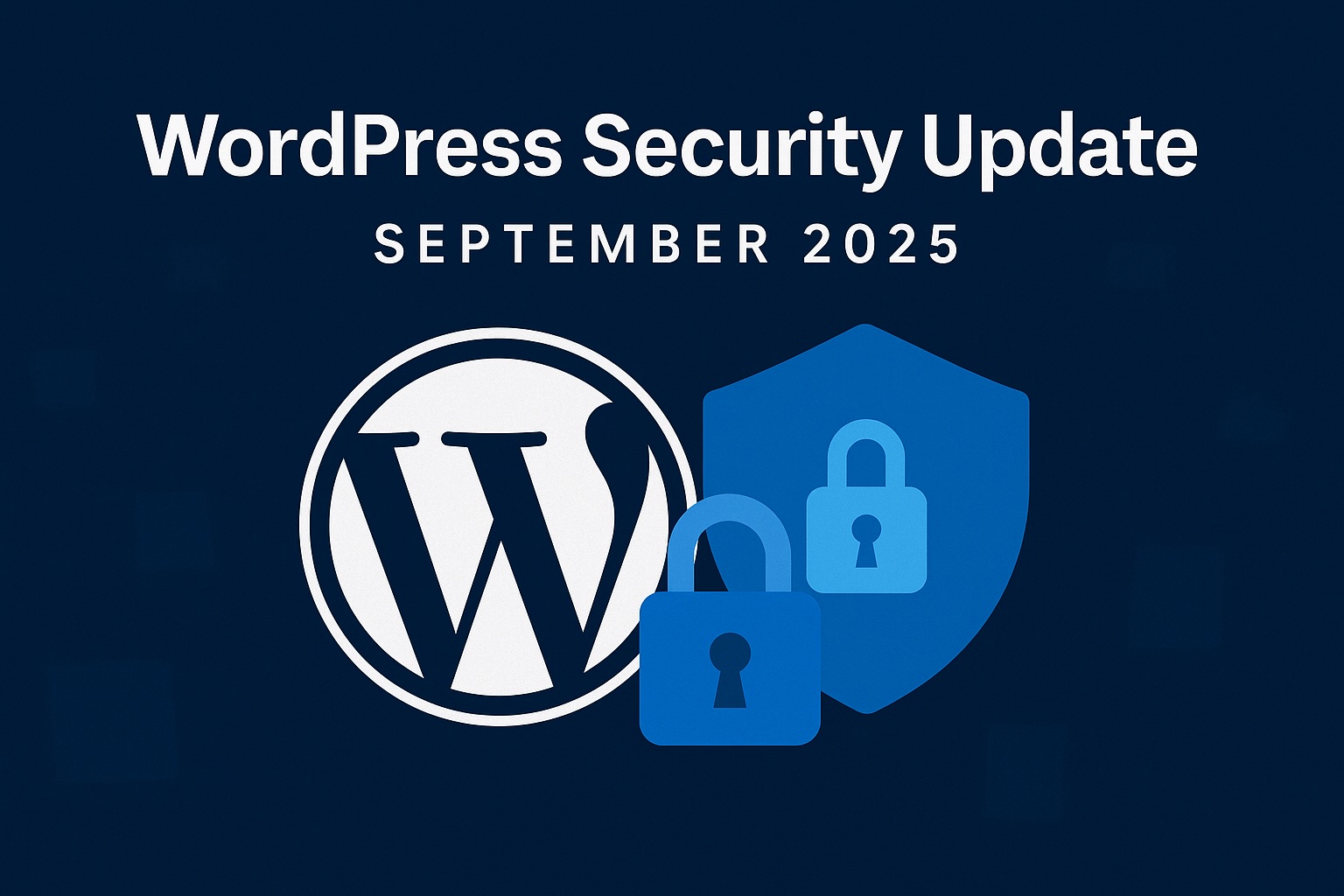Table of Contents
Introduction
By now, many site owners have probably seen searches and conversations about WordPress Security Update September 2025. The reason is simple: vulnerabilities continue to rise, and staying ahead of threats is more important than ever. In this article, we’ll look not only at recent events but also at how the security landscape for WordPress has been moving throughout 2025, compare it to 2024, and offer concrete steps – including how using Gutenberg blocks and reducing plugin dependence helps – with references to your services to help.
Trends & Data: 2024 → 2025
To understand what September 2025 means, it helps to zoom out a bit.
| Metric | 2024 WordPress Ecosystem | Early-2025 (first half) |
|---|---|---|
| Number of vulnerabilities discovered | In 2024, about 7,966 new security vulnerabilities in the WordPress ecosystem (plugins, themes, core). | In the first half of 2025 alone, Patchstack disclosed 4,462, which was ~66.6% of all named vulnerabilities for that period. |
| Relative share by component | 96% of 2024 vulnerabilities were in plugins, ~4% in themes; only a few in core. | The pattern remains similar in 2025: most issues are still happening in plugins. Themes less so; core is rarely the root cause. |
| Vulnerabilities exploitable without authentication | In 2024 about 43% of vulnerabilities required no authentication – i.e. attackers didn’t need to log in to exploit. | Early 2025 continues to show many such vulnerabilities. |
| Speed / scale of disclosure | Patchstack played a big part in disclosing vulnerabilities: in 2024, ~52% of the new vulnerabilities were disclosed via Patchstack. | In 2025 (first half) that share increased. Patchstack continues to be more active. |
sources:
From these trends we see:
- The volume of vulnerabilities is not slowing down; if anything, it’s accelerating.
- Plugins remain the weakest link. Most security problems come through third-party code, not core WordPress.
- Many issues are exploitable without authentication, which increases risk because even low-privileged or even anonymous users could potentially trigger attacks.
- Because more vulnerabilities are being detected and disclosed faster, site owners have less “lag time” before they become relevant threats.
What’s Specific in September 2025
While official data for “all of September” may still be compiling, we have external reports (like SolidWP) which suggest there are dozens of new vulnerabilities in that period. Whether it’s 114 (as claimed in one external report) or some other number, the principle is clear: every month without proper maintenance increases risk.
This makes September 2025 part of the broader upward trend, not an isolated spike. It confirms that vulnerability disclosures continue steadily, and plugin/theme authors and site owners alike need to stay vigilant.
Why Gutenberg & Block-Based Design Helps
Given what the data shows, here’s where some strategic shifts make sense – particularly moving toward block-based site design and reducing dependence on many plugins:
- Fewer plugins = fewer attack surfaces. Each plugin is third-party code; many vulnerabilities come from poorly maintained or rarely updated plugins.
- Gutenberg is part of core WordPress, so its blocks benefit from the same review and security practices that WP core has. When you build more functionality via blocks and less via external builders/plugins, you’re more likely to reduce reliance on fragile third-party code.
- Maintenance becomes simpler. With fewer moving parts (plugins, builder layers), testing updates, staging, and emergency patching are less complex and less risky.
What You Should Do Now – Recommendations
- Audit your plugins & themes Check all your active plugins and themes. Are they maintained? When were they last updated? Are there known vulnerabilities? Remove or replace anything unsupported or risky [Link].
- Keep everything up to date WordPress core, themes, plugins. Regular updates reduce the window attackers have to exploit known vulnerabilities.
- Use staging environments / backups Before applying updates or making changes, test in a staging environment. Always have backups you can restore if something goes wrong.
- Emergency readiness Have a plan for when a critical vulnerability emerges. Can you respond quickly? Do you have support or service in place to get patches installed and damage mitigated?
How Developress Can Help
Because these trends demand active, professional support, here are your services that map directly to the needs:
- WordPress Maintenance and Support – for ongoing, proactive work: regular updates, monitoring, permissions, plugin audits, performance and security checks.
- WordPress Emergency Support – when something critical happens: zero-day vulnerability, exploit in a plugin or theme, or unforeseen security breach. Quick reaction can save your site, data, reputation.
- For those looking to rebuild or build new sites in a secure modern fashion, especially with eCommerce: Website / E-Commerce with Gutenberg blocks – site structure built with fewer external dependencies, modern blocks, clean code, lower risk.
Conclusion
“WordPress Security Update September 2025” is more than just a catchy phrase – it reflects real, measurable trends: increasing vulnerabilities, especially in plugins; more severe cases; and less slack for delaying updates.
If your site isn’t already on a regular maintenance schedule, using fewer third-party plugins, or shifting to block-based design (Gutenberg), now is the time [Link]. These aren’t luxuries; they’re baseline requirements for security in the WordPress world in 2025.







